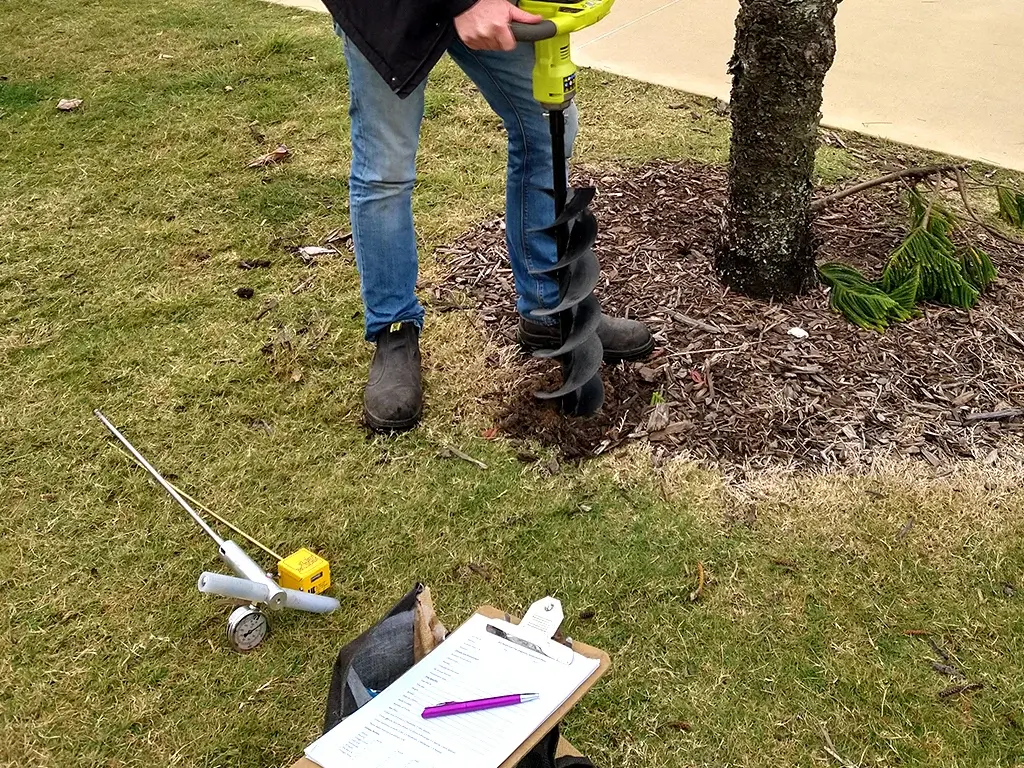The health of your plants is deeply tied to the microorganisms present in your soil. Our Soil Microbial Assessment provides a detailed analysis of the microbial life in the soil, including beneficial bacteria, fungi, and other organisms that contribute to nutrient cycling and disease suppression. By understanding the balance of microbial populations, we can recommend specific treatments to enhance soil health, such as adding organic matter, applying compost teas, or incorporating bio-stimulants. This service is especially useful for promoting long-term soil fertility and resilience in both urban and rural landscapes.
Soil microbial assessments are an important tool in understanding the health, fertility, and long-term sustainability of soil ecosystems. Micro-organisms in the soil; including bacteria, fungi, and other microbes, play crucial roles in nutrient cycling, soil structure, plant health, and overall soil function.
Understanding Soil Health and Function
Soil microorganisms are a fundamental component in soil health, driving the nutrient cycle, decomposition of organic matter and the development of soil structure. A healthy microbial community supports soil processes that maintain or improve soil fertility and plant growth. By assessing soil microbes, we gain invaluable insights into the overall health and balance of the soil’s ecosystem.

Nutrient Cycling and Availability
Soil microbes, such as decomposers (fungi) and nitrogen-fixing bacteria, play critically vital roles in the cycling of nutrients throughout the ecosystem found within the soil. Their activities break down organic matter such as dead plants and animals and release the resulting nutrients into the soil, allowing them to be absorbed by other living organisms (trees, plants, etc.). Nitrogen, phosphorus and sulphur are some of the big products created through this system and happen to be some of the most important nutrients needed for plants to survive and thrive.
Humus (Not the kind you eat!) is another biproduct of this process of nutrient cycling and is a stable form of organic matter that improves the structure and water retention capabilities of the soil, which further improves the fertility of the soil even more.
Soil Structure and Aggregation
Soil found with healthy and thriving microbial communities are generally found to be vastly more resilient to erosion, compaction and other physical stressors then less healthy soil samples. This is generally caused by the formation of soil aggregates, biproducts of thriving microbial communities where they produce extracellular polymeric substances (EPS) that act as a glue for clusters of soil particles.
The bounding of these soil particles is what helps prevent erosion and other physical stressors from impacting the fertility of the soil. Microbial assessments can help highlight any potential issues with soil aggregation or the structure of the soil that may need to be remedied.
Monitoring Soil Health Over Time
Early detection of issues with the health and fertility of your soil is one of the biggest preventors of long-term damage being done to both your soil and your plants. A microbial assessment can easily provide early warnings regarding the emergence of issues with your soil, such as disease outbreaks, nutrient imbalances or contamination. By monitoring the health and population of the microbial communities within your soil with frequent testing, you can often prevent the onset of any issues well before they become a problem.
This is particularly important in the case of agriculture and crop rotations, as more often than not incorrect crop rotations or general depletion of nutrients within the soil will lead to weaker and less abundant yields during harvest unless remedied.
Managing Soil Diseases and Pathogens
Despite seeming harmless at a precursory glance, soil diseases and pathogens can be absolutely devastating on the health and fertility of your soil and therefore on the health of your plants. The identification and control of pathogenic outbreaks shortly after or even before they occur can go a long way in maintaining the health of your garden and plants.
Some microbial assessments focus on the identification of harmful pathogens, fungi, bacteria or nematodes that may be present in the soil and affecting the growth and health of plants. Early detection of soilborne diseases such as Fusarium, Phytophthora or root-knot nematodes can reduce or even outright eliminate the issue before it becomes a bigger problem.
Sustainable and Organic Farming
The focus on building healthy soil ecosystems through natural processes in organic or regenerative farming is often an overlooked method to balancing and promoting healthy microbial communities for agriculture. Microbial assessments help track the diversity and population of microorganisms that contribute to the overall soil fertility and health of the crops.
This can help determine what kind of soil amendments such as compost or biochar might be needed and applied to boost the diversity and activity of these communities. These methods help improve the fertility, growth and resilience of crops in an environmentally friendly way.
Reducing Soil Contamination
Soil contamination can be a very serious problem to the health and growth of plants and crops. Thankfully, certain microbes in the soil have the ability to breakdown or detoxify harmful substances such as heavy metals (iron, copper, etc.), pesticides or petroleum products that make their way into the soil.
Assessments can help identify microbial communities that are capable of bioremediation which can help reduce the impact of pollutants in other areas of the garden as well. Furthermore, this can also help with the breakdown of contaminants or organic waste which further improves the health of the soil.
Carbon Sequestration and Climate Change Mitigation
Fungi are an integral part of the carbon sequestration process, where carbon from plant residue is stored in the soil. Healthy soils with active microbial populations will lock carbon in the form of soil organic matter, helping mitigate the effects of climate change by reducing the amount of greenhouse gases released into the atmosphere.
Soil also needs to breathe, releasing carbon dioxide when biological matter is broken down. Assessing microbial respiration can provide valuable insight into the health of the soil’s carbon cycling dynamics and its potential role in carbon storage.
Improving Soil Fertility in Low-Input Systems
Whether it’s a backyard garden or a small-scale farm, systems where the use of fertilizers and pesticides is minimized or outright avoided need other ways to manage the health and fertility of its soil. Maintaining healthy microbial populations is essential for nutrient cycling and soil fertility. Assessing the health of these microbial communities is incredibly important for small-scale farmers or those with a green thumb, as it helps to ensure they can maintain a healthy balance of nutrients for the soil based off actual information gathered on site.
